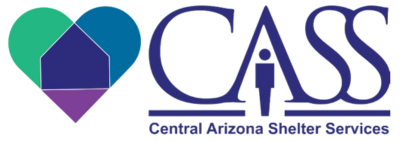STN: How humble outreach turned into leading Arizona’s largest shelter
After finding meaning in street outreach and global service, Nathan Smith now leads Arizona’s largest shelter system

Nathan Smith didn’t set out to lead one of Arizona’s most critical shelter organizations. In fact, his journey began with sandwiches.
“I had some pride issues,” Smith admitted. “My grandmother-in-law challenged me. She said, ‘Why do you feel the need to fly around the world to help people when there are so many in need right here?’”
At the time, Smith had recently returned from a mission trip to India, including time spent in leper colonies and orphanages, which fundamentally reshaped his perspective on poverty. “They had nothing,” he recalled, “but they smiled bigger than anyone I’ve ever met.”
That spark turned into a flame.
What started as a weekly outreach program—making food and handing it out in downtown Tempe—became a calling. “Your job was to make sandwiches. Then your job was to sit and eat with people,” he said of the early days. “That connection across economic lines was powerful.”
It wasn’t long before Smith turned his volunteerism into a profession. He began working at a grassroots nonprofit, setting up emergency shelters in churches and providing street-based case management. From there, he advanced through the ranks at Phoenix Rescue Mission over 10 years, eventually becoming the Chief Program Officer. Today, he’s the CEO of Central Arizona Shelter Services (CASS).
“I always said if I could continue to grow professionally, I could help more people, not just one at a time,” he explained.
At CASS, Smith oversees Arizona’s largest shelter for single adults, a 30-unit family shelter, and a newly opened 130-bed facility specifically for seniors. “Shelter isn’t the solution by itself,” he emphasized. “It’s a place where people can be safe while we work through their long-term housing solutions.”
Smith brings both strategy and humanity to the job. Raised between Phoenix and Pine Bluff, Arkansas, he credits his mother, a 45-year international flight attendant, for instilling his global outlook and sense of resilience. “She was always there,” he said. “Whether we were in Arkansas, traveling the world, or she was just trying to keep me on the straight path.”
In conversation, Smith blends humor with hope. When it comes to collaboration, he’s all business.
“I look for mission alignment,” he said of partnering with other organizations. “You don’t have to do what I do, but if we’re headed in the same direction and we do different things, we can work together.”
He highlighted the Arizona Pet Project as one example, supporting individuals experiencing homelessness who also have pets. “They do what we don’t, and together we support the whole person.”
Smith’s rallying cry for the community? Create opportunity. “We all know someone whose passions, skills, and interests could intersect with this work,” he said. “Help them find their purpose. That’s how we build the next generation of leaders.”
About CASS:
Founded in 1984, CASS is the largest and longest serving homeless emergency shelter provider in Arizona. Our adult and family shelters, as well as our temporary senior shelter operate at full capacity, 365 days of the year. CASS’ provides shelter, case management and housing support to a truly vulnerable community, from around the state and beyond.
Recent Posts






